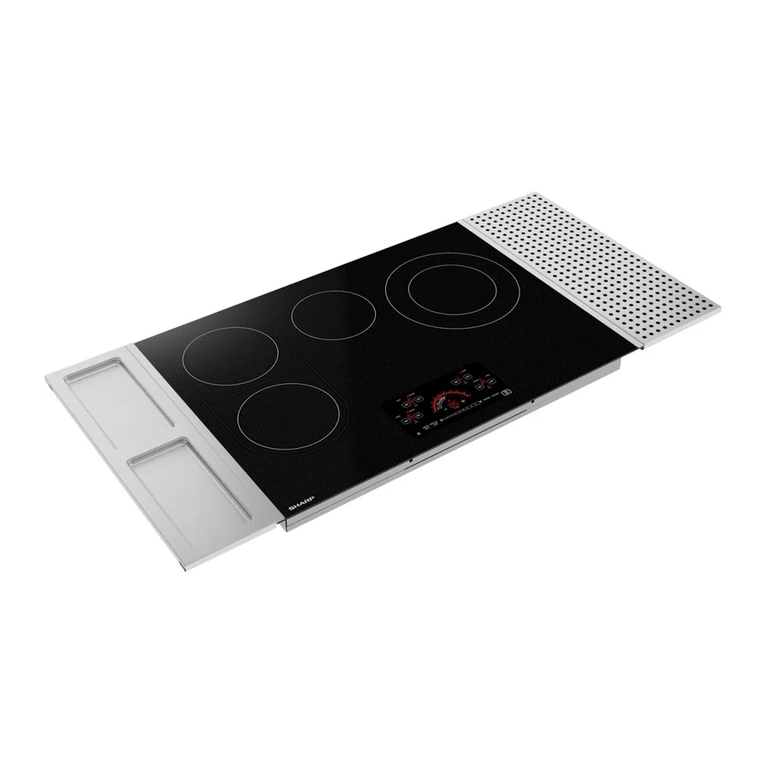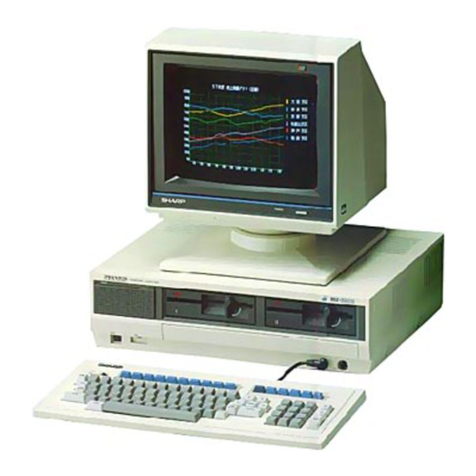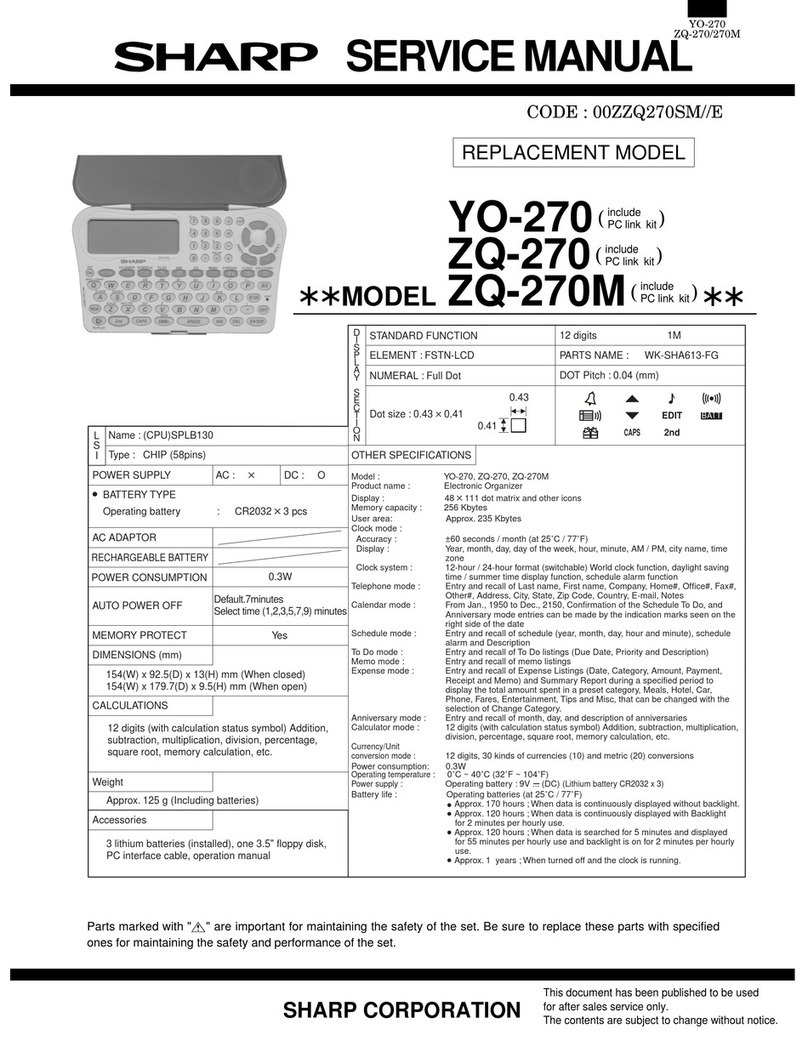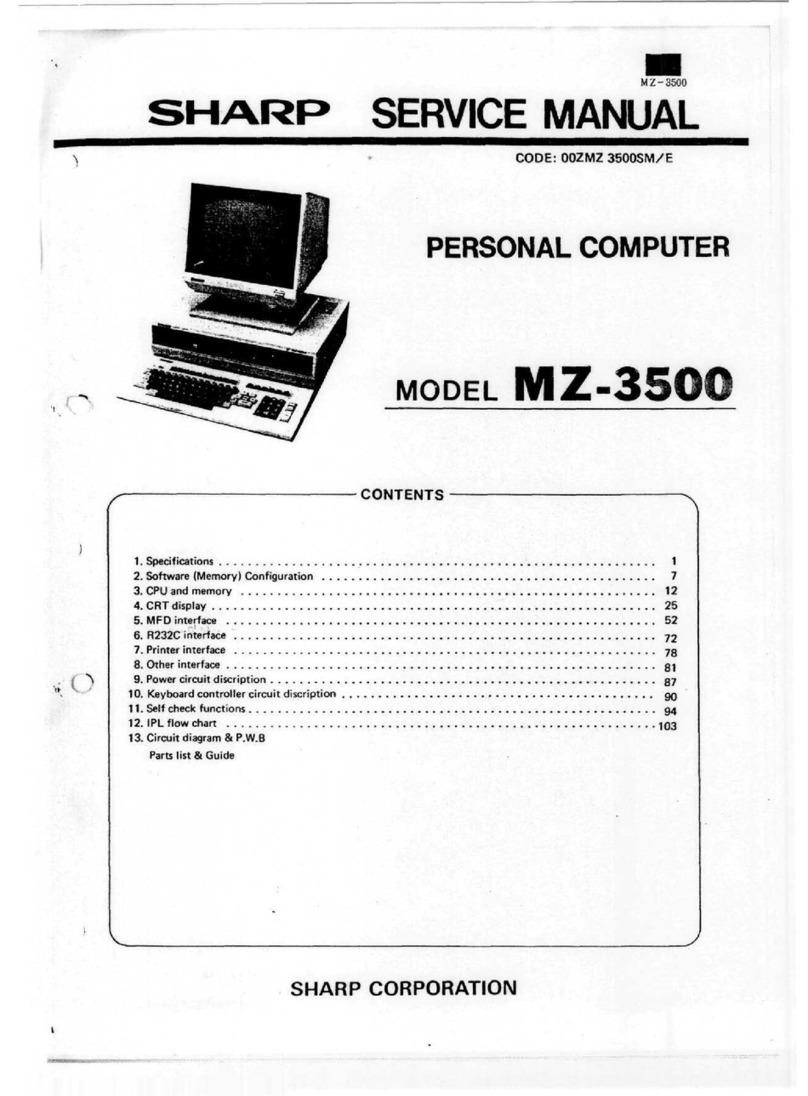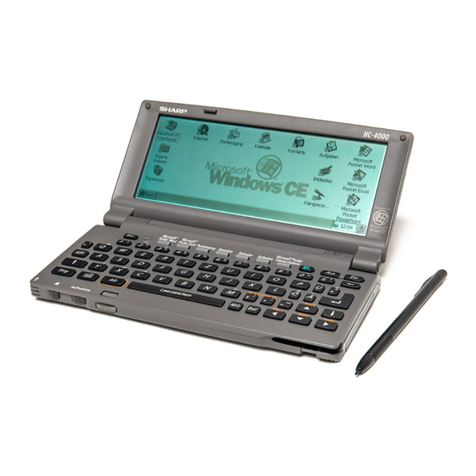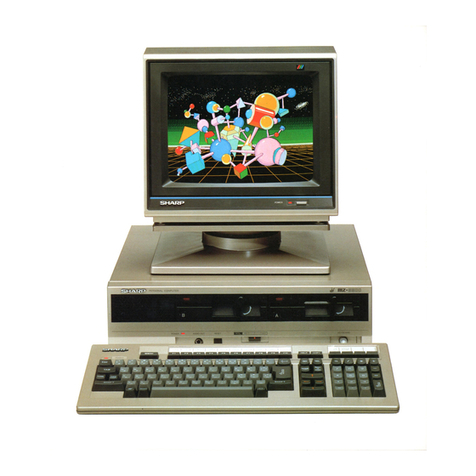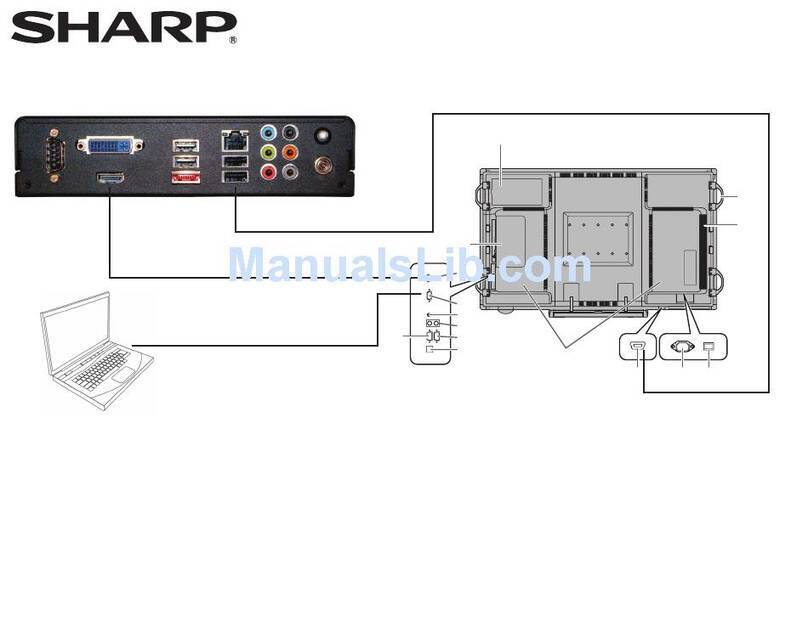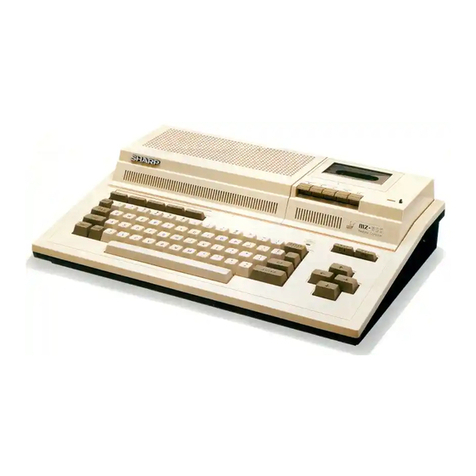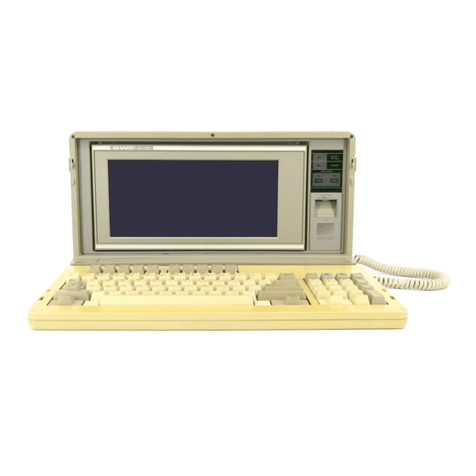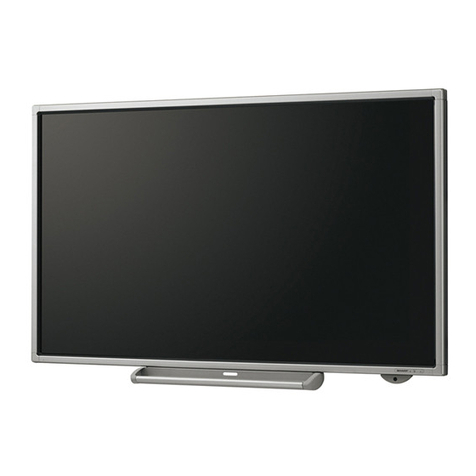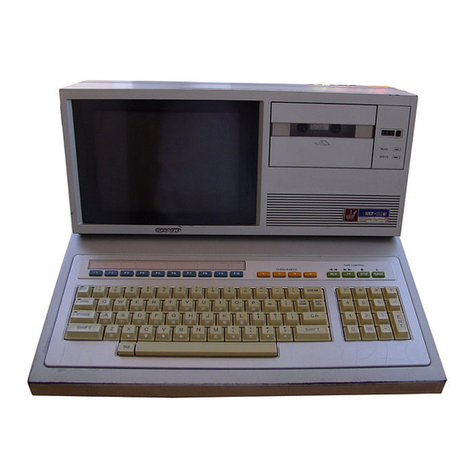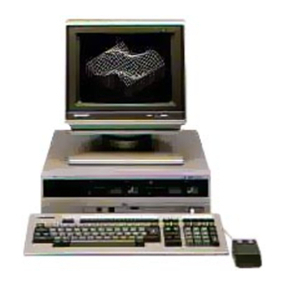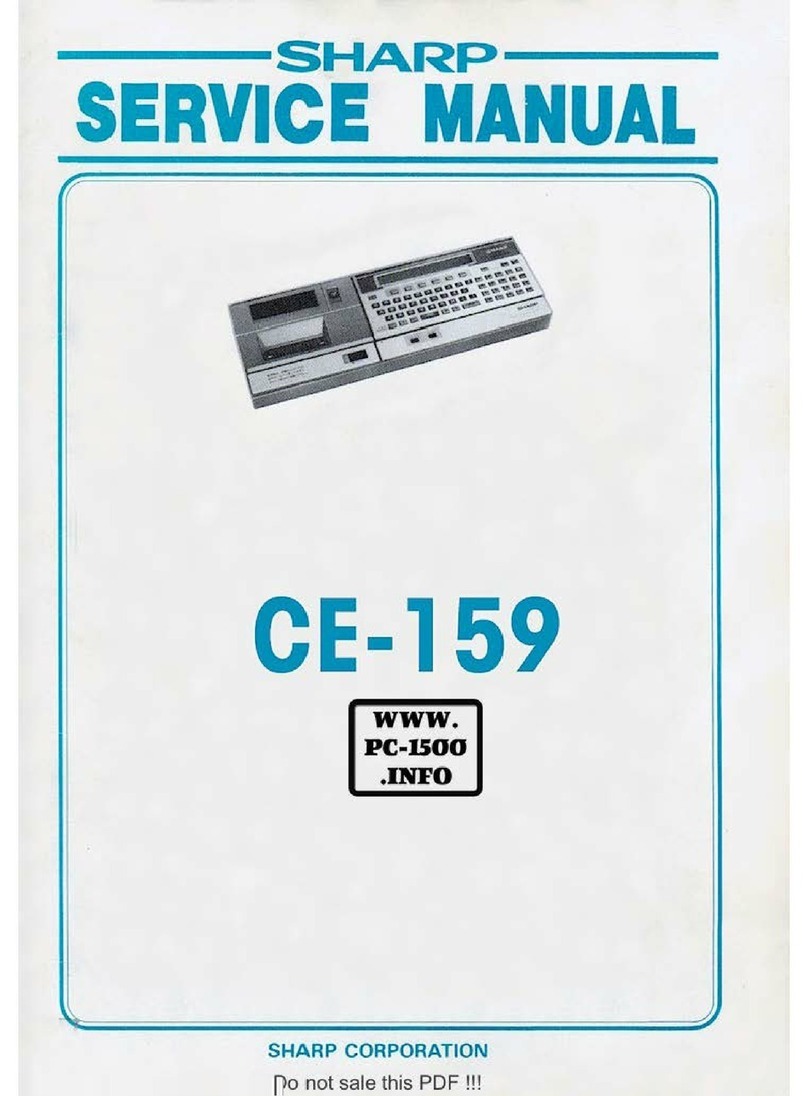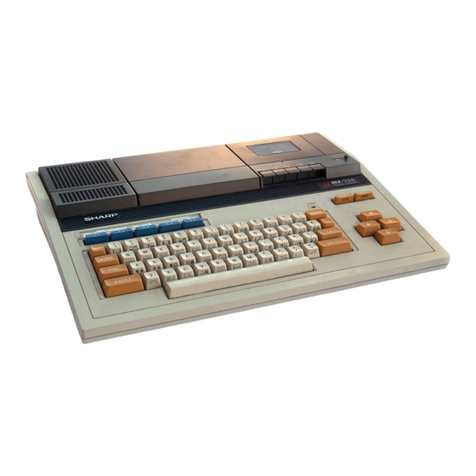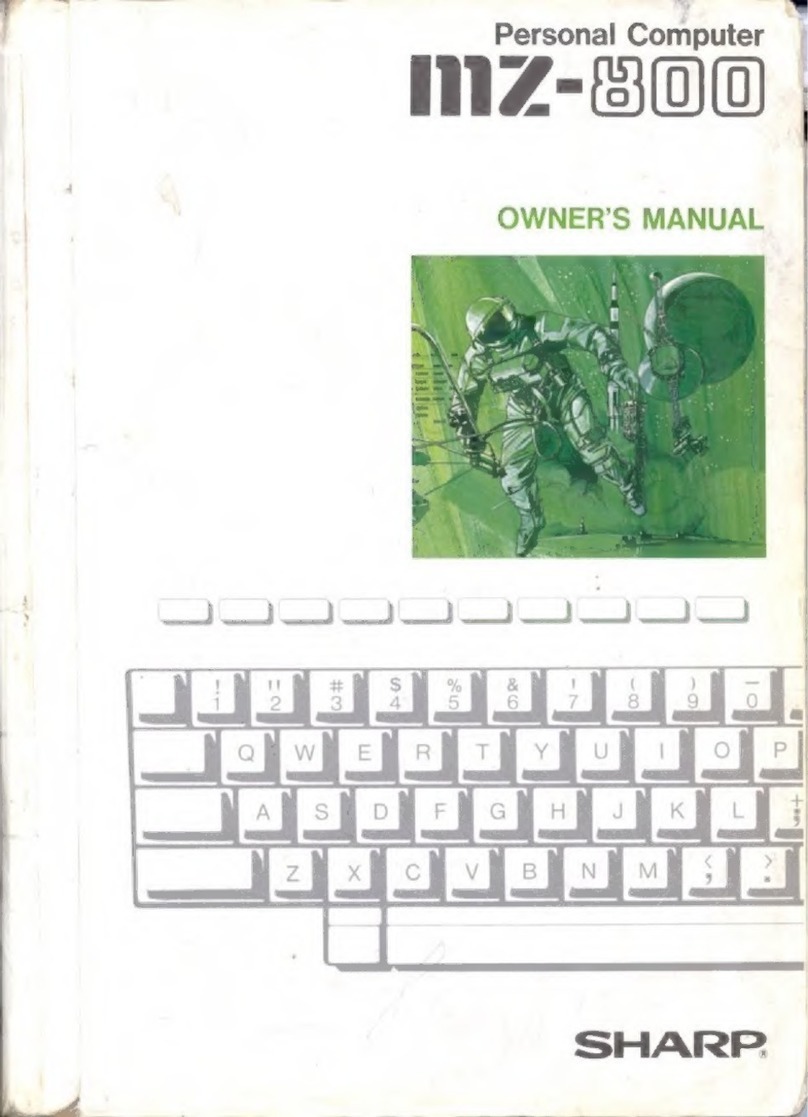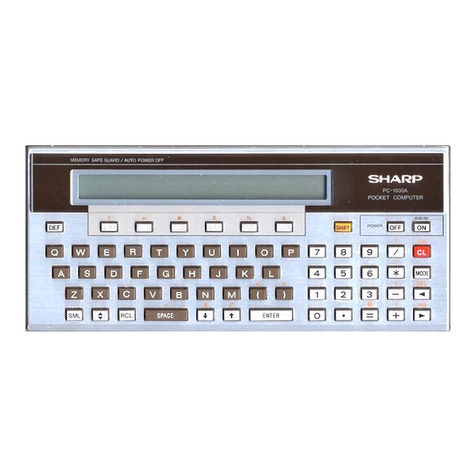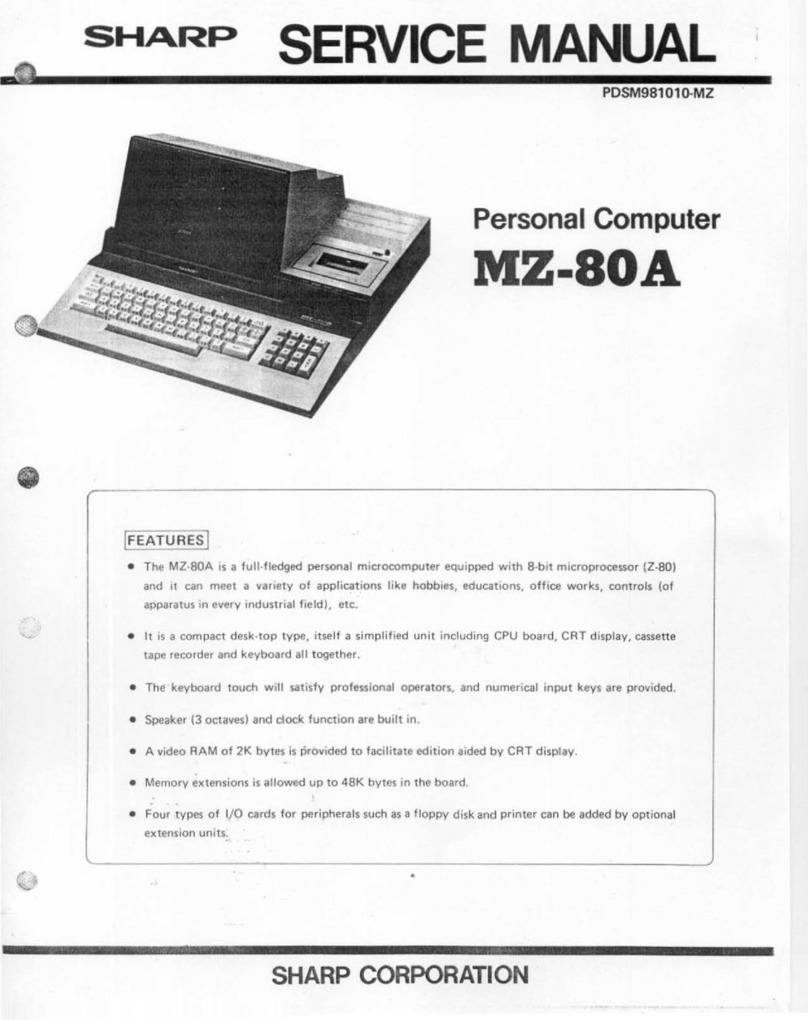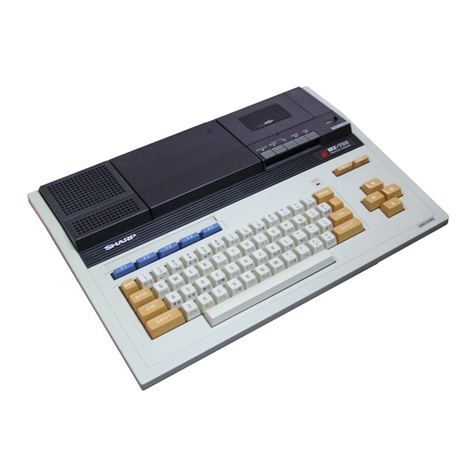CHAPTER
1.
graphic character fonts.
• Standard 640K·byte O·RAM. -
PC-7200
SVST-EM-SP-E-GlF-ICAT-ION~-
1-1. FEATURES
----
--.
-Reaf-time--eleek-{-R:r.c}...which storss-Jnformatioo related to the
The
PC~7200,
provided with numerous special features and
functions, can be used as a single·user or multi-user computer. It
is a powerlul office tool that can satisfy the diverse demands for
high-speed data processing and large-scale memory management
for
the
high-end personal computer
and
low-end multi-user
configuration.
80286 Microprocessor
The computer's central processing unit (CPU) has an 10MHz i6-bit
80286 microprocessor, permitting upward compatibility with 6088/
8086 processor operation. It performs versatile data processing at
a faster speed than the 8088/8086 processors.
Memory
The computer has 640K bytes of Random Access Memory (RAM)
and 64K bytes of system Read Only Memory (ROM). ROM contains
IPL, BIOS, and diagnostic programs as well as graphics character
fonts.
LCD
Display
A large-capacity LCD with 640x 200 pixel configuration.
Features a backlight and adjustable tilt feature for better visibility.
Built-in Interfaces
For the input/output
of
data to and from the computer, various
peripherals have been provided, including a
5-114",
high-density
floppy disk drive, a built-in 20M byte hard disk and hard diskcontroller
(PC-7221 only), and a RS-232C interfaces, and a Centronics-com-
patible printer interface.
Functional Expandability
Besides the standard features above, the functions
of
the computer
can be expanded by mounting optional devices such as the 80287
Numeric Processor Extension, or by installing any of various option
boards in the internal options slots.
Modem Card
Designed exclusively for the PC-7200, and directly attaches to the
main board.
Operating System
A DOS (Disk Operati,ng System) allows the user to communicate
with the computer and its peripheral devices, performing data
transfer and managing the memory resources of the various
equipment.
In
the single-user system configuration
of
DOS, MS-DOS version
3.2 is used. This version permits use of a wide range of commercially
available application programs. The computer can also be run under
XENIX 286 Version (multi-user configuration) and GW-BASIC,
version 3.2.
IBM Compatibility
Most of the application software, peripherals and options designed
for the IBM PC,
Xl,
and
AT
can also be used with the PC-7200.
1-2. SYSTEM CONFIGURATION
Figure
1-1
illustrates system architecture. As demonstrate, the
system's main components include thesystem unitand the keyboard
unit.
The system unit includes the main PCB, floppy disk drive, hard disk
drive (PC7221 only), and optional adapter.
The System Unit
The main PCB is composed of the following components:
• 80286 16-bit microprocessor
• Control Circuits
• 64K-byte (two
32
byte chips) ROM which contains the power-on
diagnostic program, BIOS, initial program loader (IPL), and
1
~
1
system configuration and updates the date and time even if the
computer power
is
turned off.
• Keyboard interface
• Centronics-compatible parallel printer interface
• Floppy disk interface which can control up to
two
double-density
(20)
or high·capacity (2HO) floppy disk rives.
• Asynchronous serial interface which conforms to the EIA
RS·232C standard.
• One options slots-This slotcan use both IBM
PC/XT
compatible,
B·bit type. and IBM AT compatible, 16·bit type.
• A large-capacity LCD with
640x200
pixel configuration, as a
standard feature.
• Modem card designed exclusively for the PC-7200 directly
attaches to the main unit as
an
optional device.
A high density (2HD) floppy disk drive is installed as a standard
feature.
Mounted
at
the center
of
the chassis is a 3.5 inch hard disk drive
with storage capacity
of
20M~bytes.
The power supply unit has six levels
of
power output:
+5V,
-5V,
+12V,
-12V,
-15V
and AC120V. Because these voltages are
stabilized with
the
switching regulator,
the
power supply takes less
space and is light in weight.
Inside the system unit, there is a Ni-Cd battery. This battery backs
up the real time clock, permitting it to maintain information related
to the system configuration, and to update the date and time, even
when the power is down.
SYSTEM CONFIGURATION
<
SYSTEM
u'~"CC"':....
___
~=====,--;~~-:-:
I
'.
__
•••
;1
. .
: 80287 :
L_~
_ow,
.
~
4.61'115: ',,"0"1"
~
,",e,.
0,
r===;:~~$~~:;===1
IBM
CARD
[
2"
16
b"
lull
size slots
1 " 8 bit
lull
size sici
L_-'
__
...l.
__
.L_....J
1"
8
bU
hall
size
slCI
Figure
1-1
The Keyboard Unit
The keyboard is connected to the system unitusing a 6-Pin Modular
jack connector with a coiled cable. A one chip microprocessor is
used as an interface with the keyboard unit and
the
system unit.
When the power
of
the system unit is turned on, the processor
automatically checks its
own
RAM and ROM
by
executing
the
self-diagnostic program.
